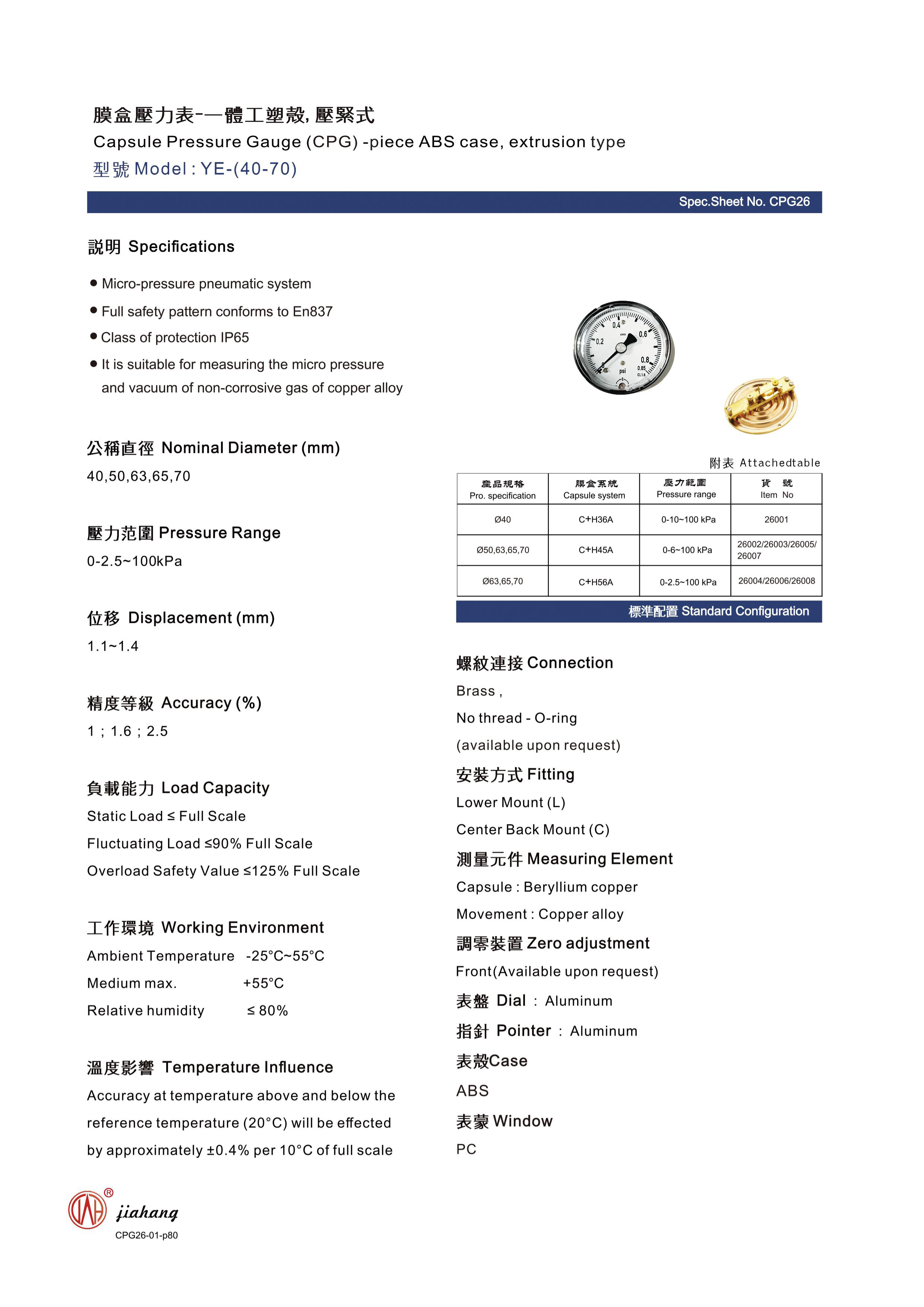
8 月 . 18, 2024 03:51 Back to list
Diaphragm Sealed Pressure Gauge Pricing and Specifications Guide
Understanding the Pricing of Diaphragm-Sealed Pressure Gauges
Diaphragm-sealed pressure gauges are critical instruments used in various industries to measure pressure effectively while protecting sensitive components from harsh environments. These gauges utilize a flexible diaphragm that isolates the measuring element from the process fluid, making them ideal for applications involving corrosive or viscous fluids. As the demand for these precision instruments grows, understanding their pricing and the factors that influence costs is essential for businesses and engineers alike.
The Construction of Diaphragm-Sealed Pressure Gauges
A diaphragm-sealed pressure gauge typically consists of three main components the diaphragm, the pressure sensing element, and the gauge housing. The diaphragm, which may be made from materials such as stainless steel, Monel, or Teflon, plays a crucial role in isolating the gauge from aggressive media. This isolation ensures that the gauge remains operational even in harsh environments, thereby increasing its longevity and reliability.
The price of diaphragm-sealed pressure gauges can vary significantly based on several factors, including
1. Material of Construction The choice of diaphragm material directly influences the cost. For instance, gauges made with high-grade stainless steel or exotic alloys can be more expensive due to their enhanced durability and resistance to corrosion. 2. Size and Range The size of the gauge and its pressure range also affect pricing. Larger gauges or those with a wider range of measurement capabilities generally have higher costs due to the complexity involved in their manufacturing.
3. Calibration and Accuracy High-precision gauges, which require stringent calibration measures and adherence to industrial standards, tend to be priced higher. Industries that depend on exact pressure readings, such as pharmaceuticals and oil and gas, are willing to pay a premium for accuracy.
4. Brand and Technology Established brands may command higher prices based on their reputation for quality and reliability. Additionally, advanced technologies, such as digital displays or integrated data logging capabilities, can also increase the price.
diaphragm sealed pressure gauge pricelist

Market Trends and Pricing Strategies
The market for diaphragm-sealed pressure gauges is competitive, with numerous manufacturers offering a wide range of products. As industries evolve and new materials and technologies emerge, companies are adjusting their pricing strategies to remain competitive.
Distributors often provide price lists that reflect different specifications, allowing buyers to choose a gauge that fits their budget and application needs. Discounts for bulk purchases are common, encouraging businesses to stock up on these essential instruments.
Importance of Cost Consideration
When budgeting for diaphragm-sealed pressure gauges, businesses should consider the long-term benefits of investing in quality gauges. While cheaper options may seem appealing initially, they could lead to increased maintenance costs, downtime, and replacement expenses in the future. Therefore, customers are urged to weigh the initial costs against the gauge's reliability, lifespan, and accuracy.
Conclusion
In conclusion, diaphragm-sealed pressure gauges are vital tools across various industries, and their pricing reflects the complexity behind their design and manufacturing. By understanding the factors that influence their costs, buyers can make informed decisions that balance their operational requirements with budgetary constraints. Investing in a quality diaphragm-sealed pressure gauge not only ensures accurate pressure readings but also enhances the safety and efficiency of industrial processes, ultimately providing greater value for money in the long run.
-
High-Precision 5 Valve Manifold Differential Pressure Gauge Suppliers
NewsApr.29,2025
-
High-Precision Diaphragm Vacuum Pressure Gauges Manufacturers & Quotes
NewsApr.29,2025
-
Omega Differential Pressure Gauges High Accuracy & Durability
NewsApr.28,2025
-
Low Pressure Differential Pressure Gauges Precision Solutions & Quotes
NewsApr.28,2025
-
Digital Diaphragm Pressure Gaauge Precision Measurement & OEM Quotes
NewsApr.28,2025
-
Differential Pressure Gauge China Price High-Accuracy & Best Quotes
NewsApr.28,2025
